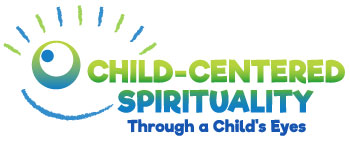How do we introduce God in our conversations with young children? How do we do that in a way that informs, yet leaves the door open to explore and journey and be curious as they grow up?
Here is a description of God that may prove useful, written in a child’s vocabulary.

This view is acknowledged in every area of the world from sub-Saharan Africa and tribes in the South Pacific to urban centers in Europe, farms in the Americas, and Middle Eastern deserts.
It is not the view of a particular religion, yet is found in the majority of world religions. It is mainstream.
Who is God?
God is a being. God does not have a body. God is invisible. People are beings too—human beings. God is a being who is greater than human beings. You can’t see God but you know He* is there. God has always been there.
God is love. All love comes from God.
God knows everything. He knows what will happen in the future. God knows what you are thinking. God knows all the facts about any subject you can imagine.
God is everywhere at once. He is not limited by time or space.
God does only what is right, good and just.
God has no beginning and he has no end.
God is pure. There is nothing evil about God.
God has unlimited power and authority.
God never changes. He is the same today as God has always been.
God is one-of-a-kind.
God makes himself known by displaying these qualities so that any child can recognize them. The human mind cannot understand God completely. God exceeds our brain’s capacity. But you can understand a lot about God.
*God is spirit, but I use the male pronoun because it is what I encounter most often when people talk about God.You may substitute the female pronoun if you wish.
Tweetables:
- God exceeds our brain’s capacity but we can understand a lot about God. Click to Tweet
- God makes himself known by displaying qualities in the world that any child can recognize. Click to Tweet
